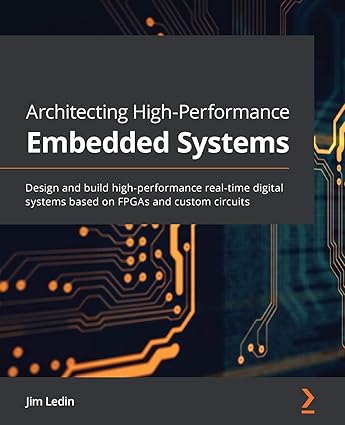Architecting High-Performance Embedded Systems: A Comprehensive Guide
Introduction
High-performance embedded systems are becoming increasingly critical in a wide range of applications, from automotive and aerospace to telecommunications and medical devices. These systems require efficient hardware and software design to meet stringent performance, reliability, and power consumption requirements. This white paper explores the key principles and techniques for architecting high-performance embedded systems based on FPGAs and custom circuits.
Key Concepts and Techniques
1. System-Level Design
- System Requirements Analysis:
- Defining system specifications, including performance, power, and cost constraints.
- Identifying critical performance metrics and bottlenecks.
- System Architecture:
- High-level system architecture, including partitioning into hardware and software components.
- Choosing the appropriate hardware platform (FPGA, ASIC, or a combination).
- Design Methodology:
- Adopting a structured design methodology (e.g., VHDL, Verilog, SystemVerilog).
- Using design tools and flows for synthesis, simulation, and implementation.
2. FPGA Design
- FPGA Architecture:
- Understanding FPGA fabric, logic blocks, and interconnect resources.
- Identifying suitable FPGA devices for the target application.
- Digital Design:
- Designing digital circuits using HDL (Hardware Description Language).
- Implementing digital signal processing (DSP) algorithms, control logic, and data paths.
- Timing Constraints and Synthesis:
- Defining timing constraints (clock periods, input/output delays).
- Using synthesis tools to optimize logic and timing.
- Place and Route:
- Placing and routing logic elements and interconnect resources.
- Achieving timing closure and optimizing resource utilization.
3. Custom Circuit Design
- Analog and Mixed-Signal Design:
- Designing analog circuits for signal conditioning, data conversion, and power management.
- Integrating analog and digital circuits on a single chip.
- Physical Design:
- Layout design, including cell placement, routing, and power distribution.
- Ensuring signal integrity and minimizing power consumption.
- Verification and Testing:
- Functional and timing simulation.
- Static timing analysis.
- Formal verification.
- Testing and debugging techniques.
4. System Integration and Verification
- Hardware-Software Co-Design:
- Integrating hardware and software components.
- Ensuring seamless communication and synchronization.
- System-Level Simulation:
- Simulating the entire system, including hardware and software.
- Verifying system behavior and performance.
- Hardware/Software Partitioning:
- Optimizing the partitioning of tasks between hardware and software.
- Balancing performance, power consumption, and cost.
5. Advanced Topics
- High-Speed Design:
- Designing high-speed interfaces and data paths.
- Managing signal integrity and timing closure.
- Low-Power Design:
- Techniques for reducing power consumption in FPGAs and custom circuits.
- Power management strategies.
- Security:
- Protecting intellectual property and securing system against attacks.
- Implementing security measures like encryption and authentication.
- Emerging Technologies:
- Exploring emerging technologies like 3D ICs, AI accelerators, and quantum computing.
References
- FPGA Prototyping by Verilog Examples by Pong P. Chu
- Digital Design and Computer Architecture by David Harris and Sarah Harris
- The Art of Hardware Design: A Verilog HDL Primer by Clifford E. Cummings
- SystemVerilog for Verification by Janick Bergeron
- Low Power Design Techniques by Gary Yeap
- High-Speed Digital Design: A Handbook of Black Magic by Howard Johnson and Martin Graham
Conclusion
Architecting high-performance embedded systems requires a multidisciplinary approach, combining hardware and software design skills. By understanding the fundamental principles, design methodologies, and advanced techniques, engineers can create efficient, reliable, and power-efficient systems. This white paper has provided a comprehensive overview of the key concepts and challenges involved in designing high-performance embedded systems. Contact ias-research.com for details.



